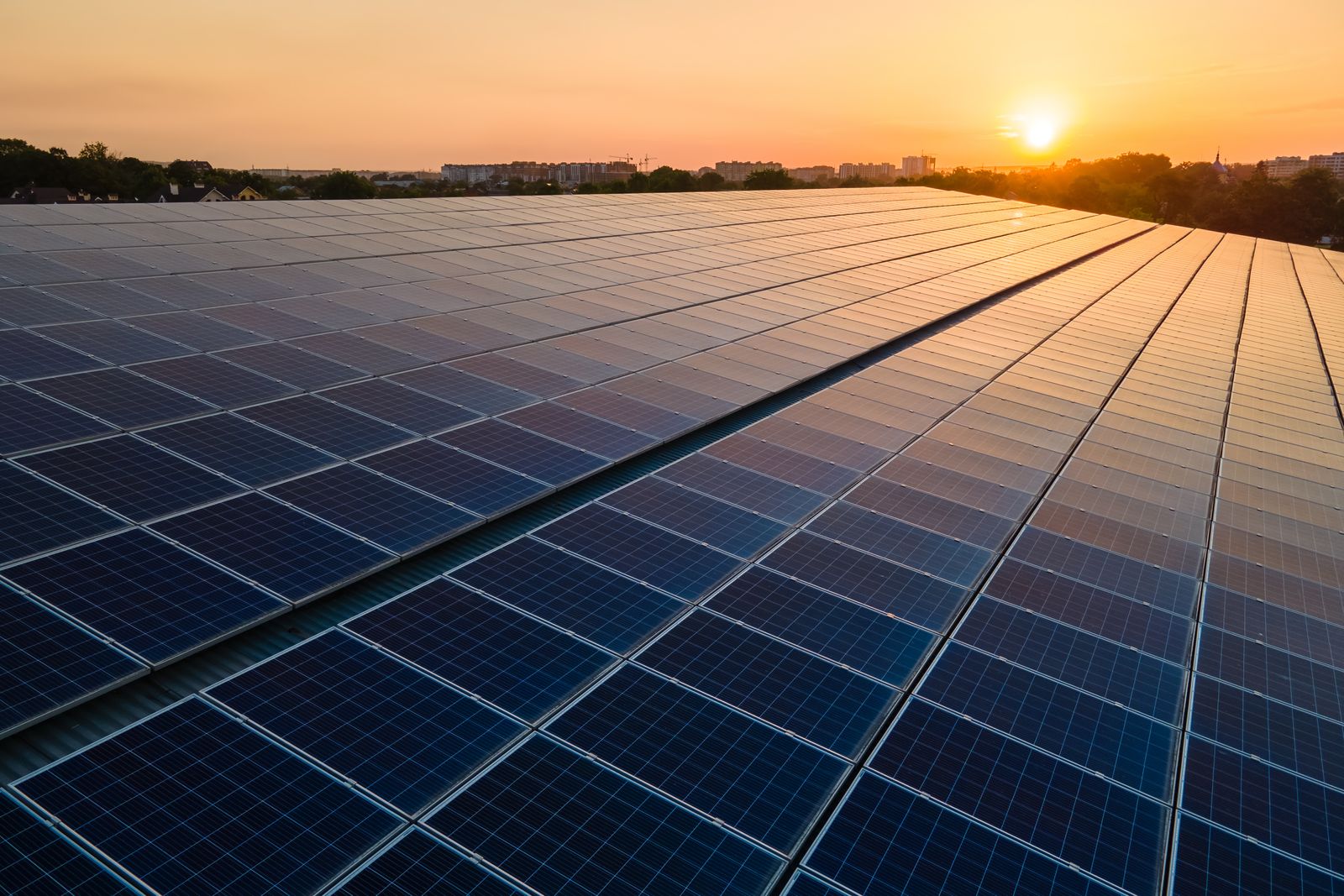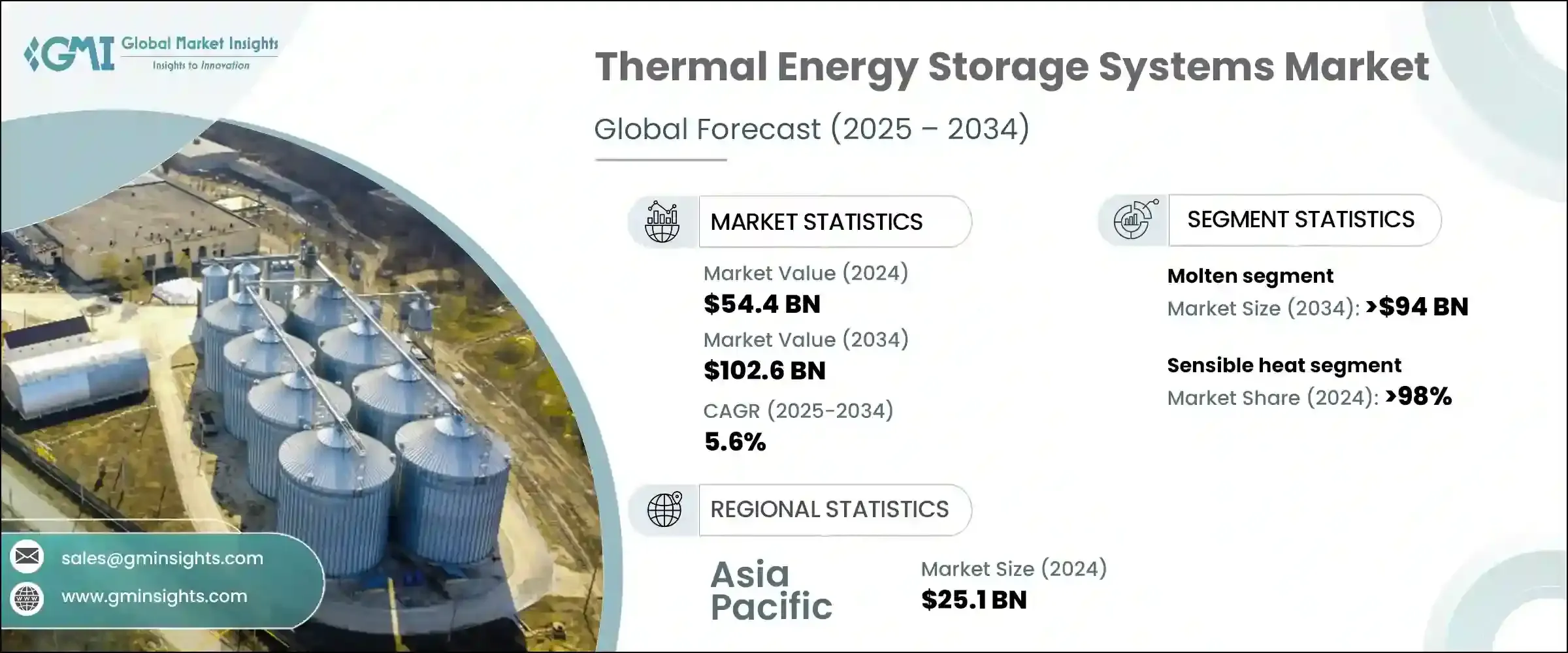Unlocking Energy Resilience
Thermal Energy Storage Systems Market to Surpass USD 102.6 Billion by 2034

As the global transition toward clean and sustainable energy accelerates, the demand for efficient energy storage technologies has surged. Among these, Thermal Energy Storage Systems (TESS) are emerging as a game-changer in managing energy supply and demand, improving energy efficiency, and enabling the integration of renewable energy sources. With the market poised to exceed USD 102.6 billion by 2034, TESS is moving from the sidelines to center stage in the global energy conversation.
What Are Thermal Energy Storage Systems?
Thermal Energy Storage (TES) systems store excess thermal energy for later use, which can be heat (sensible or latent), cold, or a combination of both. These systems enable energy to be stored during periods of low demand or surplus production (such as during peak solar or wind hours) and used later when demand increases. The three most common TES technologies include:
Sensible Heat Storage (e.g., water or molten salts)
Latent Heat Storage (phase change materials)
Thermochemical Storage (chemical reactions)
Each of these methods provides unique advantages depending on the application, from residential heating and cooling to large-scale industrial and grid energy balancing.

Market Growth Drivers
The global TESS market is set to grow significantly over the next decade, driven by several macroeconomic and sector-specific factors:
Surging Renewable Energy Adoption:
The intermittent nature of solar and wind power has fueled demand for flexible energy storage. TES provides a cost-effective solution to store thermal energy generated from renewable sources for later use.
Industrial Decarbonization Push:
Industries such as manufacturing, food processing, and chemical production are under growing pressure to reduce their carbon footprint. TES systems help these sectors optimize energy use and reduce dependence on fossil fuels.
Urbanization and Smart Cities:
Rapid urban growth is increasing the need for sustainable infrastructure. District heating and cooling systems using TES are becoming integral to energy-efficient smart city designs.
Government Incentives and Policies:
Supportive policies in regions like the European Union, the United States, and China are encouraging the development and deployment of advanced energy storage technologies, including TES.
Grid Stability and Energy Security:
TES plays a pivotal role in enhancing grid stability by storing energy during low-demand periods and releasing it during peak times, thus balancing energy supply and demand.
Key Applications Driving Adoption
Concentrated Solar Power (CSP):
TES is crucial for CSP plants to operate continuously by storing solar energy as heat and converting it into electricity when sunlight is unavailable.
District Heating and Cooling:
In urban areas, TES systems store thermal energy for heating and cooling buildings, improving efficiency and reducing energy costs.
Commercial and Residential Buildings:
TES reduces peak load demands and electricity costs in buildings by storing thermal energy during off-peak hours.
Industrial Processes:
High-temperature TES systems are used in industries that require consistent and large volumes of thermal energy, improving process efficiency and sustainability.
Regional Insights
North America:
The U.S. and Canada are investing in grid modernization and renewable energy integration, fueling TES deployment in power generation and commercial sectors.
Europe:
Europe leads in sustainable heating and cooling systems. Countries like Germany, Denmark, and Sweden are pioneers in district energy systems that integrate TES for higher efficiency.
Asia-Pacific:
Rapid industrialization, urban expansion, and rising electricity demand in countries like China and India are driving large-scale adoption of TES technologies.
Middle East & Africa:
With high solar irradiance, the Middle East is investing heavily in CSP projects with integrated TES to reduce dependence on oil-based power generation.
Technological Innovations
Advancements in materials science and system design are expanding the capabilities and efficiency of TES. Innovations include:
High-Temperature Phase Change Materials (PCMs):
New PCMs improve energy density and heat transfer rates, making TES systems more compact and efficient.
Hybrid Energy Storage Systems:
Combining TES with electrical storage like lithium-ion batteries creates flexible, multi-functional energy systems.
Digital Monitoring and AI Integration:
Smart sensors and AI are being used to optimize energy storage and retrieval, enhance operational control, and predict energy demand patterns.
Challenges Ahead
Despite its promise, the TES market faces several hurdles:
High Initial Investment:
Installation and material costs remain significant, especially for large-scale applications.
Lack of Standardization:
The absence of universal standards and testing procedures can limit interoperability and hinder mass adoption.
Material Limitations:
Some storage materials degrade over time or operate efficiently only within narrow temperature ranges, which can affect long-term reliability.
Future Outlook
The next decade will witness increased integration of TES systems across energy, industrial, and building sectors. As renewable energy generation becomes mainstream, the role of TES in ensuring reliability and resilience of energy infrastructure will only grow. New business models like energy-as-a-service and the coupling of TES with digital platforms will open up lucrative opportunities for market players and innovators alike.
Conclusion
Thermal Energy Storage Systems are proving to be indispensable in the journey toward a sustainable energy future. By enhancing energy flexibility, supporting renewable integration, and reducing emissions, TES is a powerful enabler of the green transition. As the market heads toward USD 102.6 billion by 2034, stakeholders—from technology developers to policymakers—must collaborate to overcome challenges and unlock the full potential of this transformative technology.
Source: https://www.gminsights.com/industry-analysis/thermal-energy-storage-market


